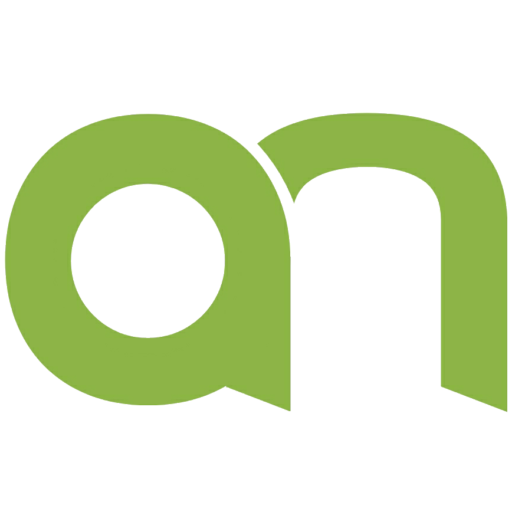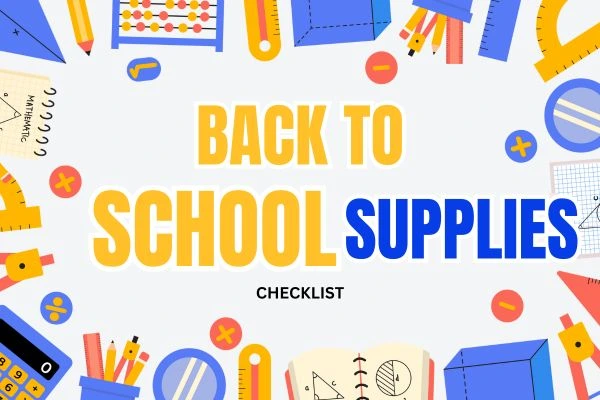End of vacation’s here!! You know what that means?
Yes, you guessed it right! It is time for you to stock up your kid’s back to school supplies.
Amidst the chaos, to make sure that you don’t forget anything, we bring to you a back to school supply checklist.
Ultimate Checklist For Back To School Supplies (Middle & High School)
1. Notebooks (Spiral & Composition)
Notebooks are essential for taking notes, completing in-class assignments, and staying organized by subject. Spiral-bound notebooks are great for tearing out pages, while composition books are sturdier and perfect for subjects like science or English.
Having one notebook per subject helps keep things clean and accessible. Students should also consider color-coding notebooks to match folders. College-ruled notebooks offer more writing space, which is ideal for older students.
Look for durable covers and reinforced binding. Keeping extra notebooks at home is always smart for mid-year replacements.
2. Pocket Folders (with & without prongs)
Folders help keep handouts, assignments, and returned homework sorted by subject. Choose folders with pockets on both sides for better storage. Those with prongs are helpful for inserting hole-punched worksheets.
Plastic folders last longer than paper ones and resist tearing. Students can color-code folders to match their notebooks for easy organization. Having extras in a locker or backpack is great for sudden project needs.
Accordion folders or binders with dividers are good alternatives for students who prefer consolidated storage.
3. Pens & Pencils
A mix of pens (black, blue, and red) and #2 pencils is a must. Mechanical pencils are convenient and cleaner than wooden ones, while traditional pencils work well for tests.
Pens should be smooth-writing and quick-drying, especially for left-handed students. Red pens are helpful for editing or peer review. A small pencil case keeps writing tools easy to find.
Make sure to stock up on extra lead or refills if using mechanical pencils. Erasers, both pencil-top and standalone, are essential as well.
4. Scientific Calculator
Middle and high school math classes often require a scientific calculator. Models like the TI-30 or TI-84 (for advanced students) offer functions for algebra, geometry, and beyond.
Check with teachers for approved models—especially for state exams or SAT prep. A protective case can prevent damage in backpacks. Solar-powered models are good backups in case of low battery.
It’s smart to label the calculator with your student’s name. Students should spend some time learning how to use key functions before classes start.
5. Binders & Dividers
Three-ring binders are great for organizing papers by subject or semester. Students can choose between one large binder with dividers or separate smaller binders for each subject.
Dividers with tabs help create clear categories like notes, homework, and handouts. Sheet protectors are also helpful for preserving important documents.
Zippered binders can double as carrying cases for loose supplies. A hole punch (manual or built-in) is useful for adding pages. Keeping the binder tidy helps avoid overwhelming paper clutter.
6. Highlighters & Colored Pens
Highlighting key info makes studying more efficient. A set of multi-colored highlighters allows for color-coded notes, which helps with memorization. Colored pens are great for annotating texts or organizing information.
Use different colors to distinguish between vocabulary, dates, formulas, etc. Gel pens offer a smooth flow and are often more vibrant. These tools are especially helpful for visual learners. Store them in a pencil case or desk organizer to avoid losing them.
7. Planner or Academic Agenda
Staying on top of assignments, tests, and deadlines is easier with a physical planner. Choose one that includes monthly and weekly layouts. Students can block out exam dates, project deadlines, and homework reminders.
Planners encourage responsibility and time management. Look for ones with motivational quotes or habit trackers for extra encouragement. Digital planners on tablets or apps like Google Calendar can be a great alternative. Whichever format you choose, consistency is key.
8. Headphones or Earbuds
Many schools now use technology regularly, so personal headphones or earbuds are a must. Wired versions are often required for testing or computer lab use. Wireless options are more convenient but should be charged regularly.
Noise-canceling features help minimize distractions during study time. Some models include built-in mics for virtual classes or group calls. Always keep a backup pair in your locker or pencil case. Label headphones with your name to prevent mix-ups.
9. Personal Hygiene & Safety Kit
Having a personal care kit in your backpack is smart and shows maturity. Include hand sanitizer, tissues, deodorant, lip balm, and face wipes. Add a small first aid kit with band-aids and pain relievers (as school policy allows).
Reusable water bottles help stay hydrated and energized. Breath mints or gum (if permitted) are good for freshening up before presentations. A small travel pouch keeps everything in one place. This kit is especially useful for after gym class or long school days.
10. Laptop or Chromebook (if required)
More schools are going digital, so a school-approved device is often essential. A lightweight Chromebook or laptop allows students to access virtual assignments and learning platforms. Protective sleeves or hard cases guard against damage.
Make sure devices are charged nightly and stored safely. Students should install necessary apps like Google Drive, Docs, and Zoom. A USB flash drive or external storage helps with backup files. Head to school tech orientation or info sessions for setup tips.
11. Art Supplies (Basic Set)
Even for non-art classes, basic supplies like colored pencils, scissors, glue sticks, and markers come in handy. These are useful for projects, posters, and creative assignments. Choose washable and non-toxic brands for mess-free use.
Keep everything in a zippered pouch or case. Craft scissors with rounded tips are safest for younger students. A small ruler, protractor, and compass may be needed for geometry or design work. Replenish supplies every few months.
12. Locker Organizer Supplies
Keeping a tidy locker reduces stress between classes. Stackable shelves, magnetic mirrors, dry-erase boards, or bins help sort books and gear. Add hooks for keys or lunch bags.
A spare set of emergency supplies (extra pens, deodorant, snack) can stay here. Customizing the space adds personality and makes transitions smoother.
Avoid overloading with too many decorations—function first! Make sure everything is school-approved in size and material.
13. Index Cards & Study Aids
Index cards are perfect for making flashcards, vocab reviews, or quick summaries. Students can use different colored cards for different subjects.
Keep a small binder ring or box for organization. Digital versions like Quizlet can also be helpful. These aids support active recall and spaced repetition. Creating cards after each unit or chapter builds strong study habits. A mix of visual and written tools helps reinforce learning.
14. Chargers & Portable Power Banks
Tech needs power, and nothing’s worse than a dead device during class. Bring chargers daily, and consider keeping an extra at school. Slim power banks are useful during long days or travel.
Check your school’s policy on power use during class. Label cords to avoid mix-ups. Stay organized with a cable case or zip pouch. Keep devices on low power mode when battery is running low.
15. Miscellaneous Must-Haves
Don’t forget the extras that make the day easier:
-
Refillable water bottle
-
Healthy snacks (granola bars, nuts, etc.)
-
Combination lock for gym or hallway lockers
-
Mini stapler and tape
-
Small umbrella or foldable rain jacket
-
Flash drive or SD card
-
Sticky notes for quick reminders
These small things often save the day and show you’re fully prepared.
🎯 Final Tip: Prep Before the Rush
Start checking off this list a couple weeks before school starts. Buy in bulk for backups, and customize the list based on school requirements or schedules. Organization and preparation are your superpowers for a smooth school year!
See Also:
-
Practical Picnic Bucket List Checklist (For summer fun & Family Outings)
-
Smart, Stylish & Sun-Ready: Women’s Ultimate Summer Packing Checklist
This checklist is your savior.
Do not keep the shopping for the last day.
Let us know if you found this informative.









